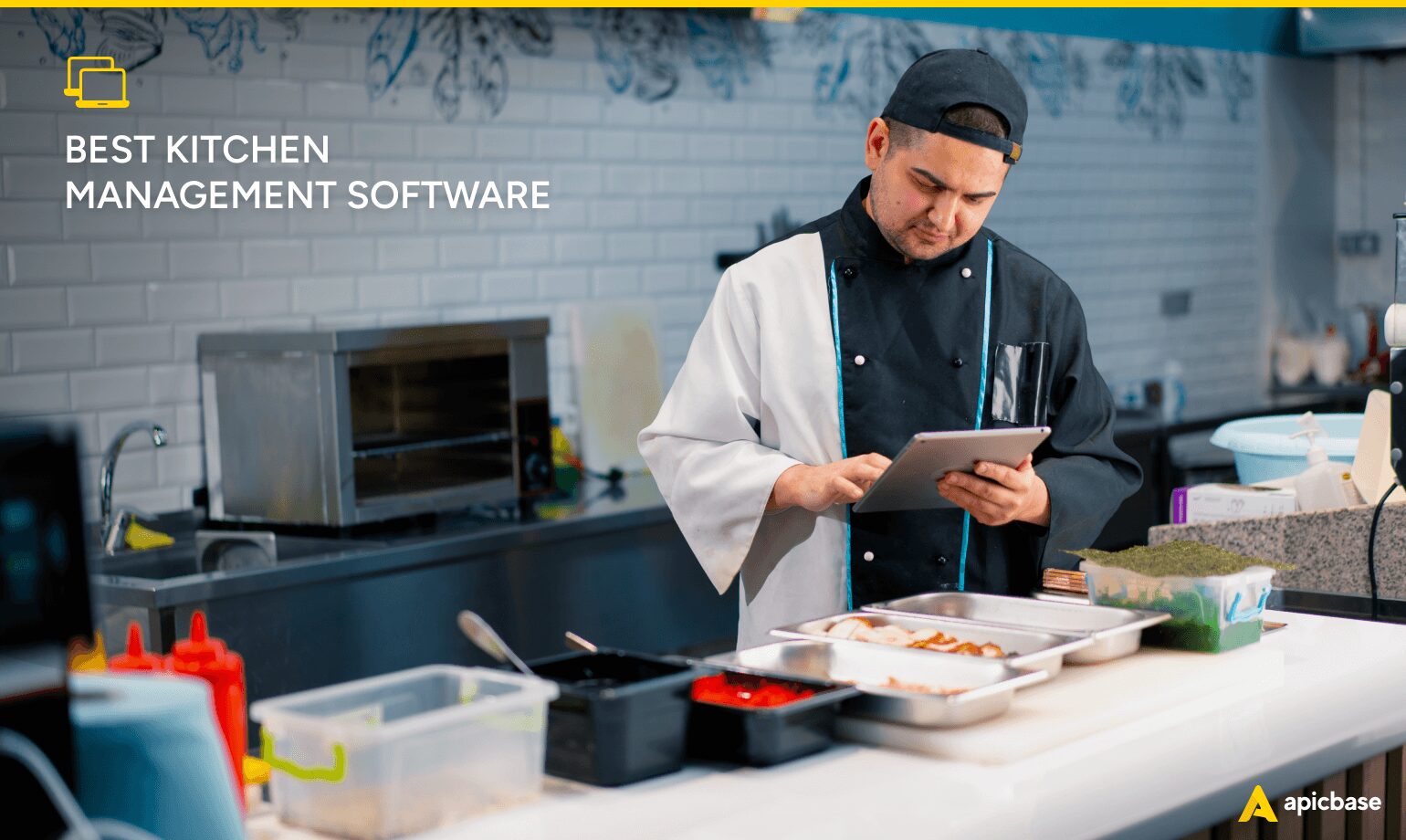The kitchens are the heart of your restaurants. But without the right tools, keeping things running smoothly is a challenge. That’s where kitchen management software (KMS) steps in. The system transforms complexity into efficiency and chaos into order.
KMS simplifies essential tasks like inventory control, recipe management, and food cost tracking. It gives you full control over your back-of-house operations.
A digital kitchen management solution helps restaurants run efficiently across all locations. It reduces waste, maintains quality standards, and boosts profitability—without adding extra stress.
The Importance of Kitchen Management Software
Restaurant kitchens can be chaotic, especially during busy times like lunch and dinner. Orders come in fast, and running out of key ingredients is more common than you’d think.
This puts extra pressure on the back-of-house (BOH) team. It also leads to miscommunication with the front-of-house (FOH). This causes mistakes and delays service.
Restaurant kitchen management software addresses these challenges. It streamlines tasks like inventory control, recipe management, and order tracking. In fact, 76% of restaurant operators say technology gives them a competitive edge. KMS helps to reduce waste, ensure consistent meals, and control food costs. 65% of restaurants are already automating inventory management. This suggests that time and money savings are significant.
The impact of KMS is especially strong in multi-unit operations. Restaurant owners know that small mistakes can add up to big losses. KMS helps protect the bottom line and drive success at scale.
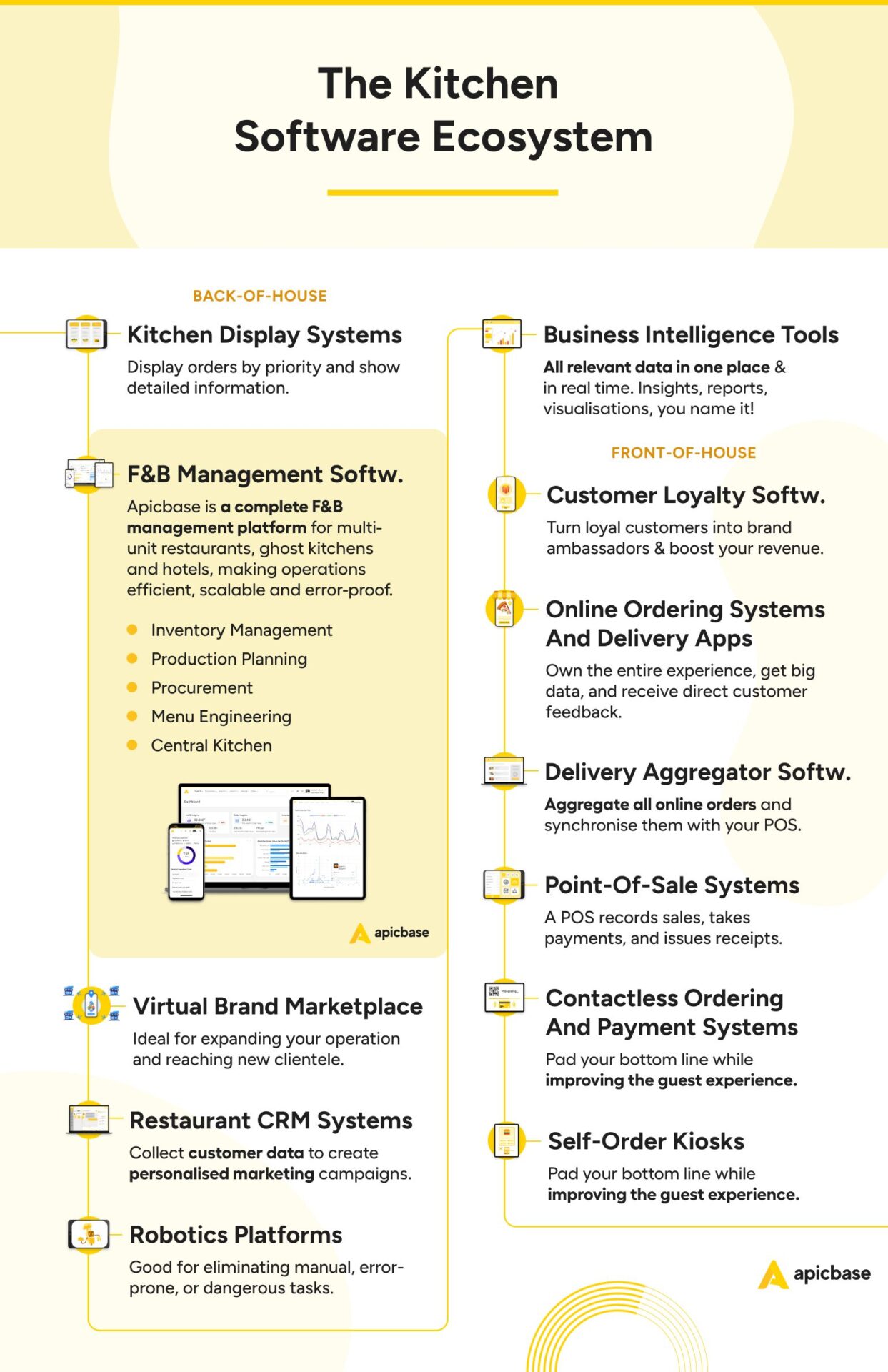
How to Choose the Right Kitchen Management Software (11 Key Considerations)
There are many software solutions available, each offering different capabilities and strengths. But, certain key features are essential for any restaurant technology to be effective. These are necessary for the software to meet your needs.
Be sure to look for the following features when choosing a restaurant solution.
1. Recipes – Your Core Data Set
Recipes are the backbone of any foodservice business. An operating system with recipe management features helps you scale recipes with precision. This ensures consistent results across all locations. Recipes also provide critical data for inventory control and cost analysis.
But a recipe is more than a list of ingredients. Your recipe database should be information-rich. Think allergens, nutritional values, and even the carbon footprint of each product. Consumers and large catering clients demand transparency. Your recipe database is the perfect place to centralise the necessary information.
2. Cloud-Based SaaS
Cloud-based software centralises operational data and makes it accessible from any device. With remote access, managers can track performance and make real-time decisions. They don’t need to be on-site.
These platforms also improve collaboration and training. Teams across different locations stay connected. Any updates to procedures, menus, or recipes are instantly available. This boosts efficiency and ensures operational consistency. As your business grows, the software can adapt. You can add new locations, users, and recipes without difficulty.
3. Integration-Ready
The best kitchen management software integrates seamlessly with your existing systems. It connects all the devices and technologies your team relies on daily. A KMS should link to your POS, online ordering systems, order kiosks, apps, and digital signage.
The result is a unified and efficient tech stack. It also enables frictionless data-sharing with external platforms. Look out for tools with robust API endpoints. For example, to connect with supplier order portals. It ensures error-free communication.
4. Automation
Automation is key to boosting efficiency. A Kitchen Management System automates inventory management, ingredient tracking and purchase orders. This saves time and reduces errors. Stay away from systems that require data exports to Excel for tasks like stock counts. This adds complexity to workflows and makes them prone to errors.
5. Mobile Access
Kitchen staff can check metrics and execute tasks from their phones or tablets. Mobile access lets them do stock counts, update orders, or access recipes on the spot. This saves time because they don’t have to copy the data into a sheet later on or update the app on a desktop.
For managers, it means approving orders, tracking performance, and managing kitchen tasks remotely. The result? Faster operations, fewer errors, and smoother workflows across the board.
6. Multi-Unit Capabilities
Multi-unit support is essential for centralised control in restaurant operations. A foodservice management system integrates data from all locations into a single platform. Operators can check key metrics and flag discrepancies across locations. They get alerts on critical issues like low inventory or supply chain disruptions.
These real-time insights empower restaurant managers to make informed, data-driven decisions. It helps to optimise resources, ensure consistency, and enhance overall management.
7. User-Friendly Interface
Not all employees are tech-savvy, so user-friendliness is crucial. The best systems are straightforward to use. This minimises training time, accelerates adoption and reduces frustration. A well-designed back-of-house solution should have an intuitive interface. That way, navigation is simple and feels familiar.
Restaurant software should provide tools that genuinely enhance day-to-day tasks. Efficient operations improve employee productivity.
8. Real-Time Insights
Real-time insights enable your kitchen teams to make quick, informed decisions. Restaurant managers have to think on their feet. Instant access to key metrics makes all the difference. Think inventory levels, food costs, and unit revenue.
A well-designed kitchen management system displays this data in clear dashboards. It helps managers to spot mistakes, address issues, and make adjustments on the fly. The results are less overstocking or stockouts. Efficient resource use reduces waste and drives profitability.
9. Modular System
A modular system offers the flexibility to start with only the features you need. You can expand as you grow. Start with a solid recipe database. Accurate recipe data is crucial. It directly impacts purchasing, inventory, production, and cost control. These are all vital for running a profitable business.
As you scale, you can integrate other modules. Production planning, menu planning, and HACCP management are examples. They help to minimise errors and enhance operational excellence. You can also add sales analytics, reporting, and dashboards. These modules empower your team with data-driven insights. Modular systems, like Apicbase, ensure you only pay for what you need. But you can scale and gain deeper insights as your business evolves.
10. Strong Support Team
Your employees depend on technology to perform at their best. So, your tech vendor should be more than a provider; they should be a true partner. Your success is their success. So, look for a software partner with a dedicated support team. They should offer multiple ways to reach them, such as by phone, online chat, or text.
That way, you can resolve issues quickly and keep your operations running. Solid support makes a big difference in setting up and maintaining your restaurant management system.
11. Cost and ROI
When evaluating the software, it’s best to consider the total cost. This includes setup fees, training, and ongoing support. Compare these costs with the expected return on investment (ROI). For this, check case studies and user reviews. This will show if the system improves efficiency, cuts waste, and increases profitability.
This way, you can be sure the system will deliver long-term value to your business.
The 17 Best Restaurant Kitchen Management Solutions
Kitchen management software comes in many forms. They all offer different benefits for food service operations. Here are some of the best tools for back-of-house (BOH) and front-of-house (FOH) success.
1. Kitchen Display Systems (KDS)
Commercial kitchens use a kitchen display system (KDS) to manage orders easily. These screens in the kitchen show new orders by priority. This includes details like dietary requirements. By syncing with point-of-sale (POS) systems, a KDS helps improve communication. It cuts down on paper use and makes order prep faster—making it a must-have tool for busy kitchens.
2. Inventory Management Software

Real-time inventory tracking is indispensable. It prevents running out of stock and helps reduce food waste. Inventory management software helps restaurant owners keep track of stock levels. It organises inventory data and generates food waste reports. The connection with the POS system keeps stock data accurate. Employees know exactly what to order from suppliers. They don’t buy too much, which helps to keep food costs under control.
3. Production Planning Software
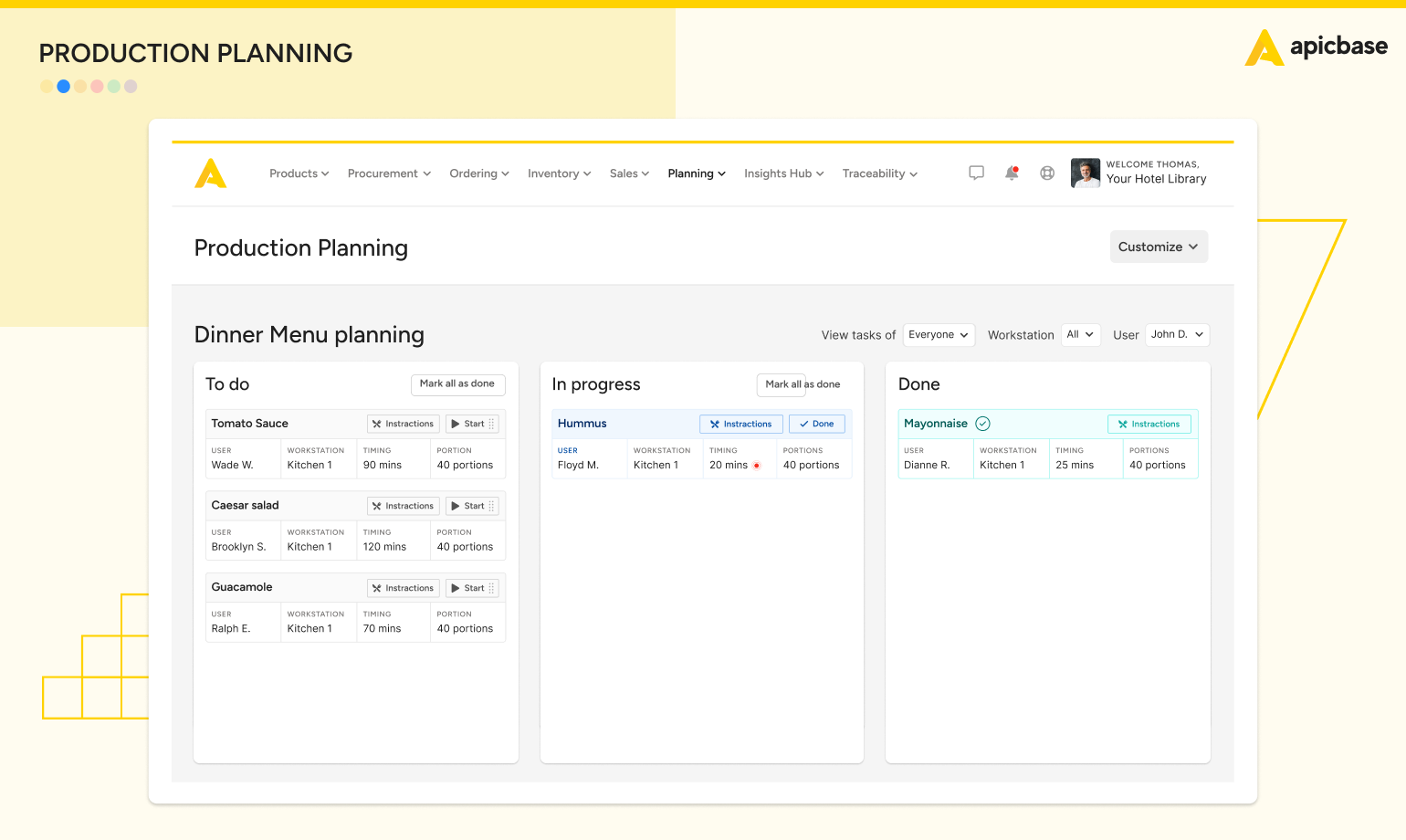
Production planning software helps to prepare meals on time and with consistent quality. The software first updates stock levels. Then, it converts bills of materials (BoMs) into purchase orders. It considers production schedules and lead times. This way, the software ensures meals and semi-finished products are ready when needed.
4. Procurement Management Software
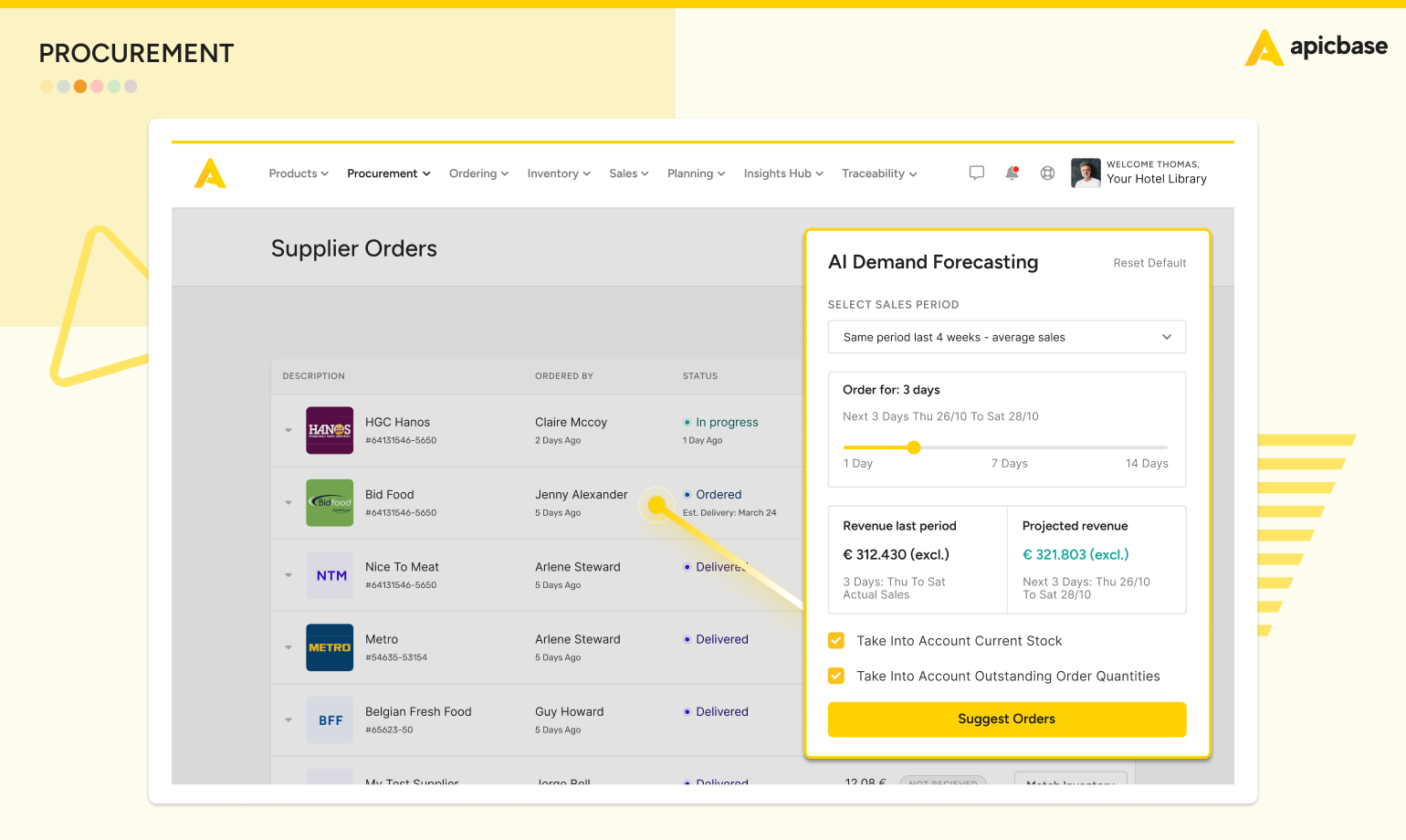
Procurement management software automates purchasing ingredients and predicts demand. It also makes the intake process easier. This ensures you have the right ingredients at the right time, which helps reduce both waste and cost.
5. Menu Engineering Software
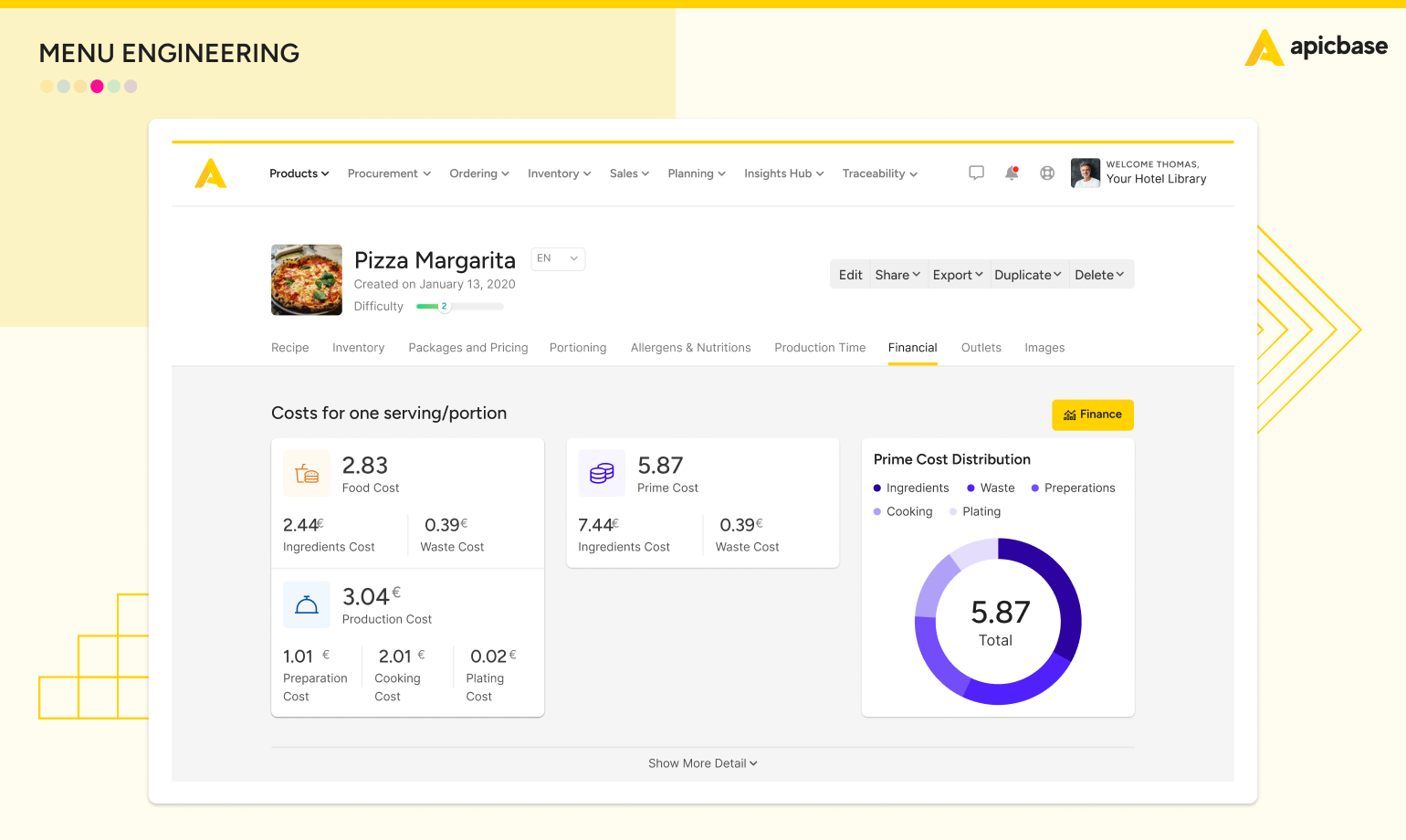
Menu engineering is key to a restaurant’s profitability. Menu engineering software tracks menu costs and helps optimise each dish for profitability. It also highlights underperforming menu items so you can update or remove them. The best kitchen management systems integrate seamlessly with POS. This allows easy data sharing and real-time reporting.
6. Central Kitchen Software
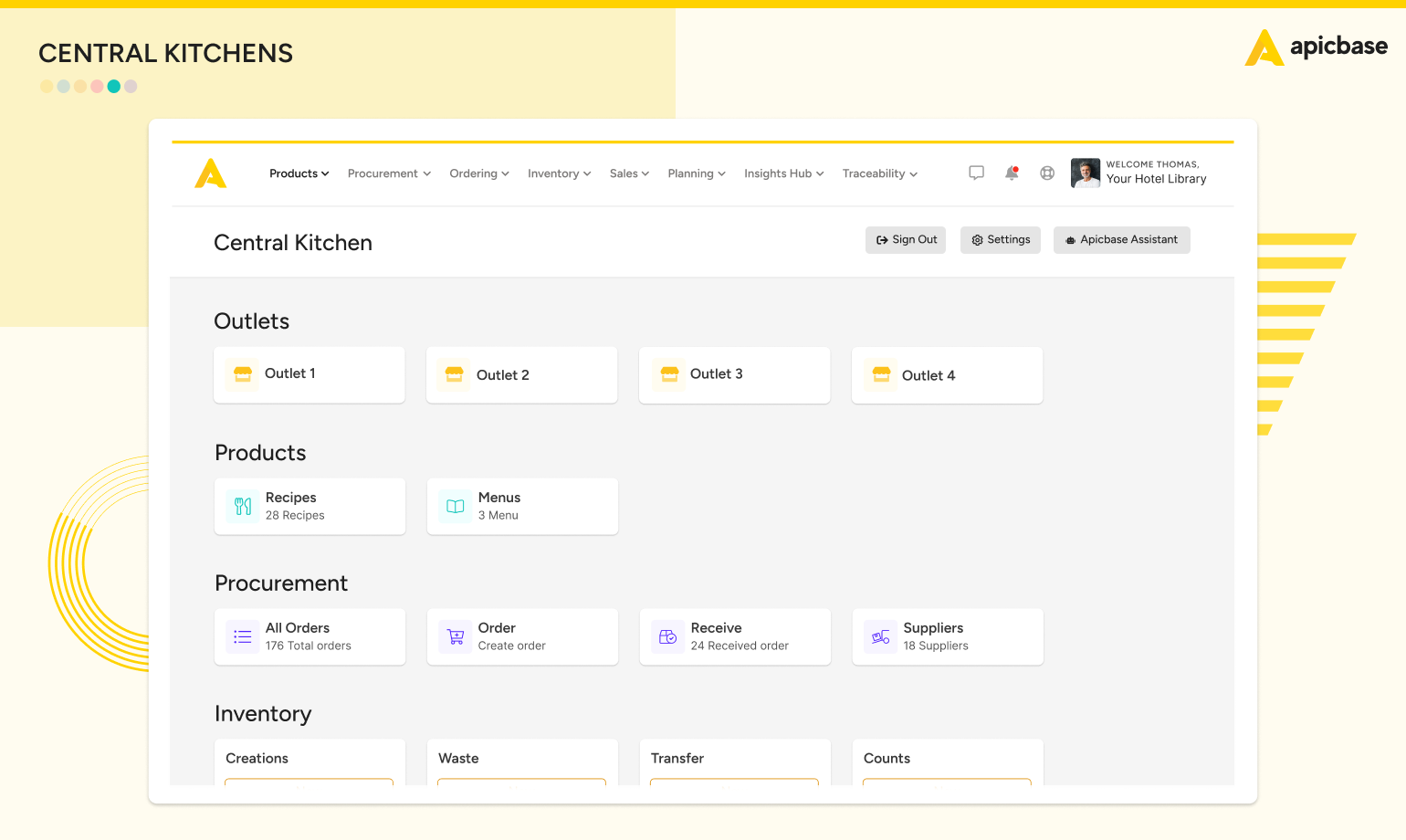
Kitchen management software streamlines central production kitchens. It automates recipe scaling for batch productions. It tracks real-time inventory and simplifies stock transfers between units. The system simplifies bulk ordering, monitors production costs, and ensures food safety compliance.
7. F&B Management Software
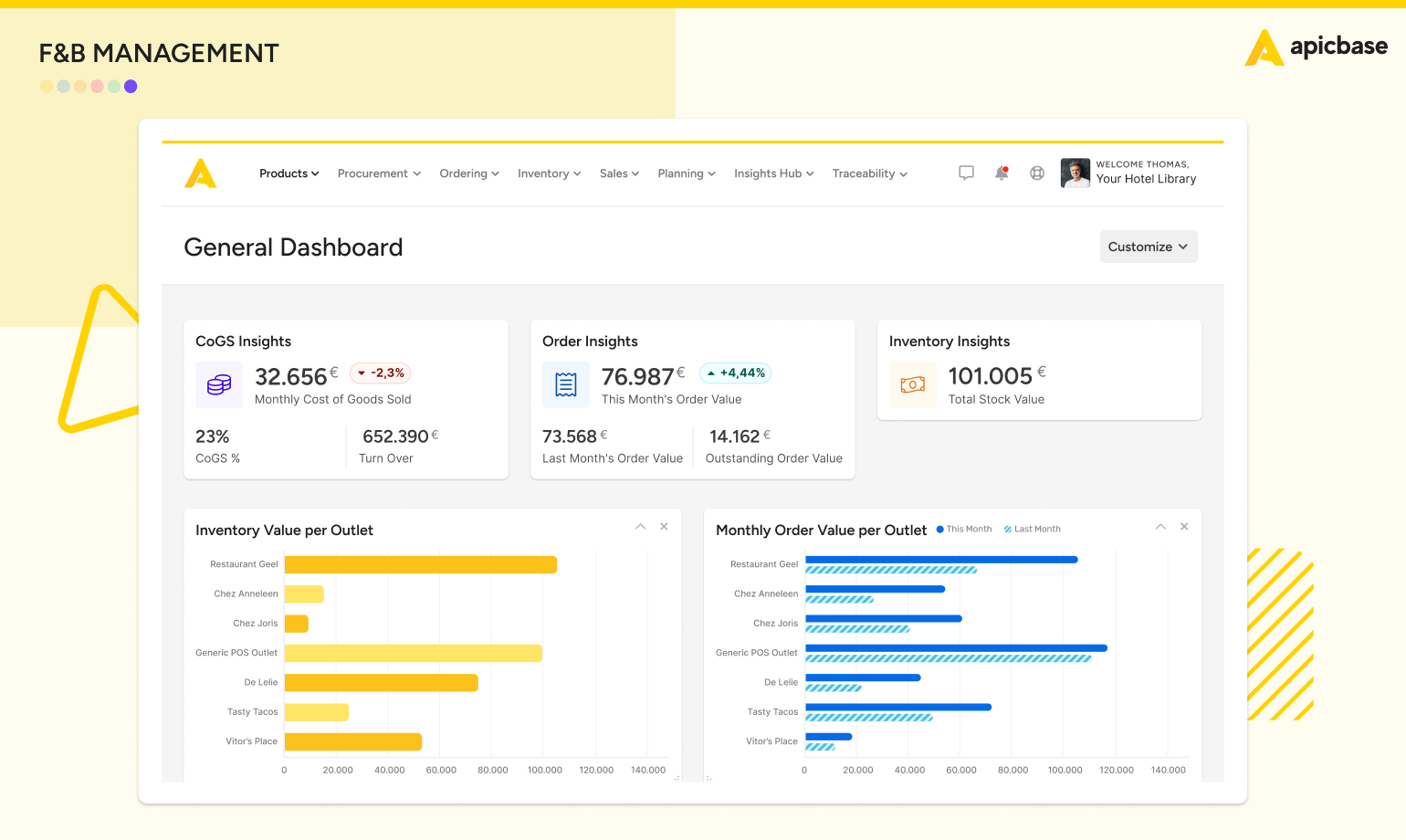
Comprehensive back-of-house management software, like Apicbase, provides an all-in-one platform. It helps manage recipes, inventory, ingredient buying, and sales monitoring. The centralised dashboards keep operations efficient and consistent across all locations. And they provide real-time insights into key metrics.
8. Robotics Platforms
Robotics is transforming restaurant operations by taking over repetitive or hazardous tasks like frying and kneading dough. In an industry struggling with staffing shortages, robotics platforms—like Stellar Pizza’s robot chef—help reduce labour demands.
9. Business Intelligence Tools (BI)
Business Intelligence tools collect data from all kinds of sources. Sales, inventory, and customer trends are all captured and turned into valuable insights. With BI tools like Tenzo, restaurants can make better decisions. A data-driven approach helps improve menus, manage inventory, and predict future demand.
10. Delivery aggregator software
Managing online orders from multiple delivery platforms can overwhelm staff. They have to deal with an avalanche of notifications and manually transfer orders to the POS. This complexity increases the risk of delivery errors.
Delivery aggregators like Deliverect and RusHour are kitchen management solutions that simplify operations. They sync online orders from various apps with your POS system, automating workflows. These systems track food orders and streamline menu management across platforms. They also offer insights and reports to help you make more informed decisions.
11. Point-of-sale systems (POS)
A point of sale (POS) system records sales, processes payments, and issues receipts. It’s a vital tool for restaurants that streamlines transactions and boosts productivity. It does this by consolidating customer orders, online and offline, into one system.
Modern POS software connects with inventory management, restaurant analytics, and CRM systems. These integrations provide crucial data. The information from the POS helps with marketing, menu engineering and cost control. The ePOS, or digital point of sales system, is a central part of a restaurant’s tech ecosystem. Without it, managing operations would be a challenge.
12. Contactless ordering and payment systems
Juniper Research claims contactless payment technologies have become a $6 trillion business. Mobile ordering and payment apps offer significant advantages for restaurants and hybrid kitchens. This includes faster table turnover, improved order accuracy, and a better customer experience. QR code platforms are an example. They allow customers to order and pay without downloading an app.
13. Self-order kiosks
Self-service kiosks, like Tabesto, are popular in QSR. It helps restaurant chains adapt to evolving customer expectations. These kiosks allow diners to browse menus, place orders, and pay without waiting in line. Order kiosks offer a fast, convenient experience.
For restaurants, kiosks help optimise operations. It frees up staff and speeds up order processing. The automatic upselling prompts increase the average check size. Kiosks are also popular with hybrid kitchens for the flexibility they offer. They enable smooth pickup, takeaway, and on-site dining experiences.
14. Online ordering systems and delivery apps
Restaurants add delivery and pickup to their sales channels. The online ordering systems and delivery apps streamline the process.
These systems allow operators to create an online menu, schedule deliveries. Features like cross-selling and QR code ordering help to boost sales. Many restaurant owners partner with third-party services like Uber Eats and Deliveroo. It offers extra visibility but building an in-house system also has advantages.
It gives operators control over the customer experience. But also access to valuable data and direct feedback. Easy Order is an excellent option for creating your own custom app and loyalty program.
15. Customer loyalty software
Customer loyalty software, like CRM systems, strengthens customer relationships. It helps turn return visitors into brand ambassadors, which boosts revenue.
Food service operators use platforms like Yollty to reward loyal diners. These platforms also enable customers to provide direct feedback. This helps you refine your loyalty program, promotions, and marketing for better results.
16. Brand marketplaces
Restaurants use virtual brands to test menu concepts and reach new customers. Setting up a virtual brand is relatively simple. Yet, it requires thorough market research. Before launching a new brand, you need to understand what type of food is in demand. Who are your competitors? Which customers will the new virtual brand attract?
If you prefer not to start from scratch, you can license an existing, successful brand. Simply browse a brand marketplace and select a proven concept. Brand marketplaces help you start up quickly with a tested, ready-to-go virtual brand.
17. Restaurant CRM systems
Restaurant CRM systems are essential for fostering customer loyalty and engagement. These platforms collect valuable data. For example, email addresses, phone numbers, and order details. The program tells who your customers are, what they ordered, when, and where.
With this data, operators can create personalised marketing campaigns and targeted promotions. This encourages repeat business and enhances customer relationships. The insights provided by CRM systems help restaurants better engage with their customers. The aim is to drive long-term loyalty.
Choose a Kitchen Operations Management System That Delivers on Every Front
Apicbase offers essential back-of-house features for multi-site restaurants and large-scale catering operations. The platform simplifies kitchen management. It helps you run an efficient, cost-effective operation across multiple locations with ease.
Here’s how Apicbase can transform your operations:
- Boost efficiency, reduce food waste, and lower costs
- Cut data silos across systems and modules
- Enhance service and improve profit margins
- Keep your workforce engaged and satisfied
- Ensure flexibility to adapt and grow
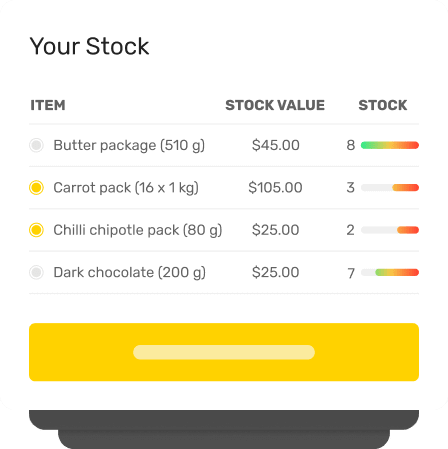
Level-Up Your Kitchen Management System
Discover how Apicbase streamlines your kitchen operations.

